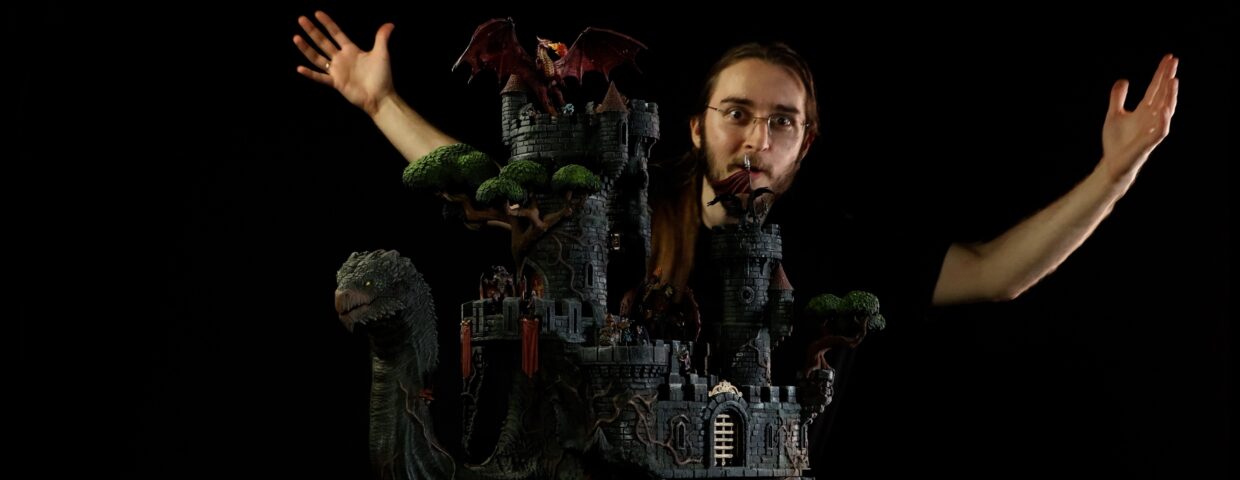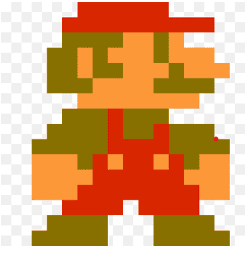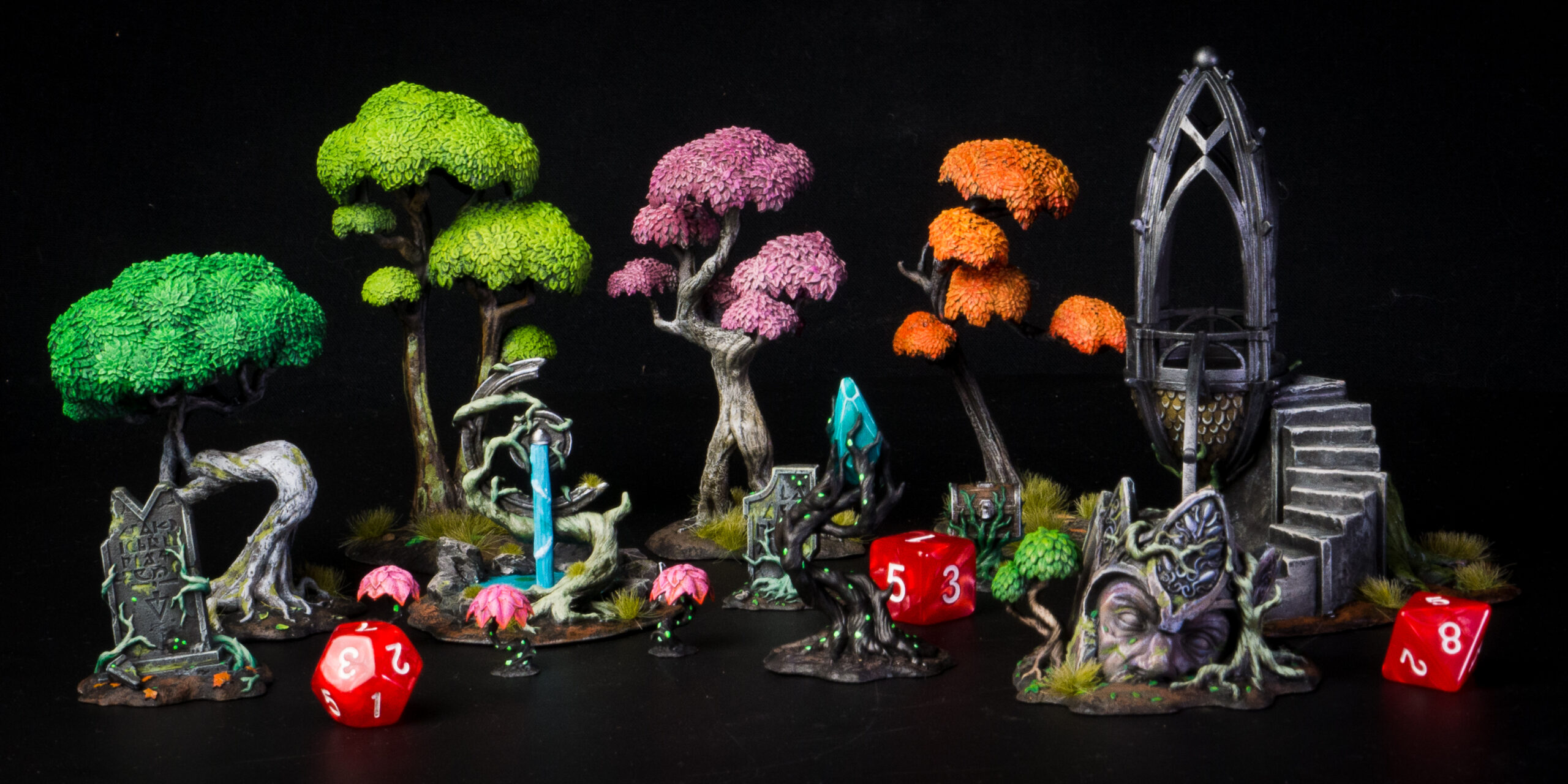Painting Statues vs. Painting Minis
Make Sure You Know Your Model to Get the Best of It

It’s Saturday afternoon and your guests have just finished settling down. Yes, even that couple that always arrives 45 min late. The table is set up and menial conversations about the weather, the road on the way there and the 68th Marvel movie of the year are starting to take place. Then, a shocked gasp silences the group as they look to your shelf of statues and minis. You already know what it is. You stifle a smirk.
“<Your name here>…what is that?” the voice on the other end of a tremulous finger pointing at your shelves asks.
The next actions have been rehearsed. In one fluid motion, you pick the statue to place it in the middle of the gathering. Yeah, it’s a statue I’ve 3D printed and painted over the last weeks. I know, the model’s incredible, it’s from a subscription that also includes props and miniatures. Oh, it’s nothing, it took some time but I’m well satisfied with how it turned out.
With the statue frantically changing hands, every painstakingly layered detail finally gets noticed. All the hours under harsh lights holding that paintbrush that has less bristles than you have eyelashes have finally paid off. Your shoulders still ache a bit from leaving them stiff for hours on end, but the result is gorgeous. You feel the excitement of your peers reaching a crescendo, and it’s time for the finishing blow. With the most disaffected tone of voice possible, you mention the painted miniatures, scenery and props for today’s adventure.
The table stops and stiffens; they’re not ready for what’s coming. As you set the miniatures for them, one by one, Greg faints. The other members pay no heed to him, as they’re already fighting amongst themselves in order to grab their favorite mini to role-play or ship themselves with. This happens with such vivacity that it takes you a while to notice someone knocking on your door. It’s your father, tears running down his face, and he’s proud of you. Oh, how much you’ve grown and developed as a human being, and are you gonna get this? Your phone’s vibrating. It’s the important-role-model in your life, you know who that acting-scientist-artist-politician-entrepreneur person is, the one you like so much. They know what you’ve done, and they’d like to congratulate you for it. All is well.
Or something like that.
A bit exaggerated for the sake of demonstration, of course.

Anyhow, it’s good to know proper techniques to paint miniatures and statues. Some of them overlap, others are more suitably applied to each case. The final outcome is an object that looks gorgeous. Beyond that, an object that can withstand some handling, while being finished in the most time and cost-efficient way possible.
If you’ve never painted before, you can check out this guide for beginners before continuing your reading.
The Painting Process Stays Pretty Much the Same
There are some key differences regarding how you’re to approach statues and minis for painting. Still, there’s some base which is applicable in either case. Prepare for a good study on Color Theory (which you can read about here), Composition, and various other techniques. By emulating diverse materials and ambient lights will ensure that, whatever the size, there’s always a beautiful painted 3D printed object by the end of the process. You’ll be licking paint brushes either way!
It’s a Matter of Resolution
We’ve already come to a point in 3D printing technology that you may find miniatures and statues with such a level of detail that it starts to get indiscernible to the human eye. What a time to be alive! That gets emphasized especially once you factor in the variance that happens in each print. Whether they are additional textures provided by the paint, brush or print layers, or other kinds of dust or debris that can cling to your object in any part of the finishing process.
In any case, there’s an analogy that could be made similarly between 2D designs and brought into the 3D printing imaginary. If you wish to draw something on a tiny piece of paper, there’s just so much detail that can be crammed in before you start to challenge your motor skills, the differential improvements each brush or pencil stroke would make on the piece and your mental sanity. Working on a big sheet, however, lets your add more details, and work with it as a whole. Balancing highly detailed areas with more sparse, simpler parts that allow the eye to ease its rhythm when drinking in the composition and behold the unit at a better pace. On the other hand, if your medium has little working area, there’s an exercise not just on dexterity, but also simplification to be made. I’ll explain.
Statues Can Be Seen as Big Canvases
With a big working surface, you can detail how much you want or are willing to do. Be wary that statues, more often than not, are made to be contemplated and to decorate a given setting. They will be subject to more scrutiny, as if to answer “well, why is this being treated as a centerpiece?”. If you’d still like to make something imposing, it’s always good to focus on the main areas of your statue and spend more time fleshing out details on these specific points. Don’t know where they are? That’s simple: it’s the path your eyes naturally take whenever looking at the object.
As a more traditional-art example, I’d recommend both Lena Rivo (@lenarivo), iberic gouache painter, and Thierry Duval (@thierryduvalaqua), french aquarellist. There’s a clear knowledge of the path being taken by the viewers’ gaze in each of their paintings. So much that they take extra care to work especially on those main areas. Magnifying certain elements to the detriment of others is not just a question of patience and skill. It takes artistic knowledge to purposefully avert the eye of the onlooker to certain parts of your composition. Be it two or three-dimensional.
Miniatures and the Art of Sugestion
It is easy to find the opposite of this spectrum. That is because it has been developed due to a technical constraint for many decades: pixel art. One of the most beloved characters in existence, Mario, achieved global stardom almost 40 years ago, using a sprite made from a mere 16×12 pixel grid. Note, below, that although it wasn’t physically possible to enhance details on his clothing and face, you can see that Mario wears buttoned overalls, long sleeves, a hat, boots and a mustache (all of that done with less than 80 pixels!).

Gestalt is a psychological theory that makes you sound smart when saying it and is about the way humans perceive their environment. It states that organisms (≈humans!) perceive objects based on patterns or configuration, rather than individually. We’re very good at it (select all squares with traffic lights) and you should surely take advantage of it, as some clever folks of Nintendo did 40 years ago.
You can just look at something like this:

In this context:

To know someone is trying to convey you that’s an eye. You don’t need an eyelid, iris, tear duct, pupil and sclera to understand it (ok, some people do, humans are not that simple). Likewise, merely drawing attention to some features of your prints with a simple shading wash can be a simpler, easier and faster way to provide details. As no one, ever, in the history of miniatures has painted a single 32mm mini and stopped at that, finding time and effort-efficient ways of making your miniatures gorgeous sounds like the best way to go.

Conclusion
While this article was more theoretical than practical, I hope it has helped you to see painting miniatures or statues with a different perspective. You can also read about painting realistic skin to make your model look even better. As always, the 3 most important tips are practice, practice, practice. Start giving life to minis (and share our work with us!). Who knows, maybe that’s just what will make an acting-scientist-artist-politician-entrepreneur person see your future work.
Loot Studios can help you paint highly detailed minis, statues and props. Choose your favorite bundle from our previous releases or sign up for Fantasy or Sci-Fi to receive a new bundle every month. You can also check out some tips at our YouTube Channel.




